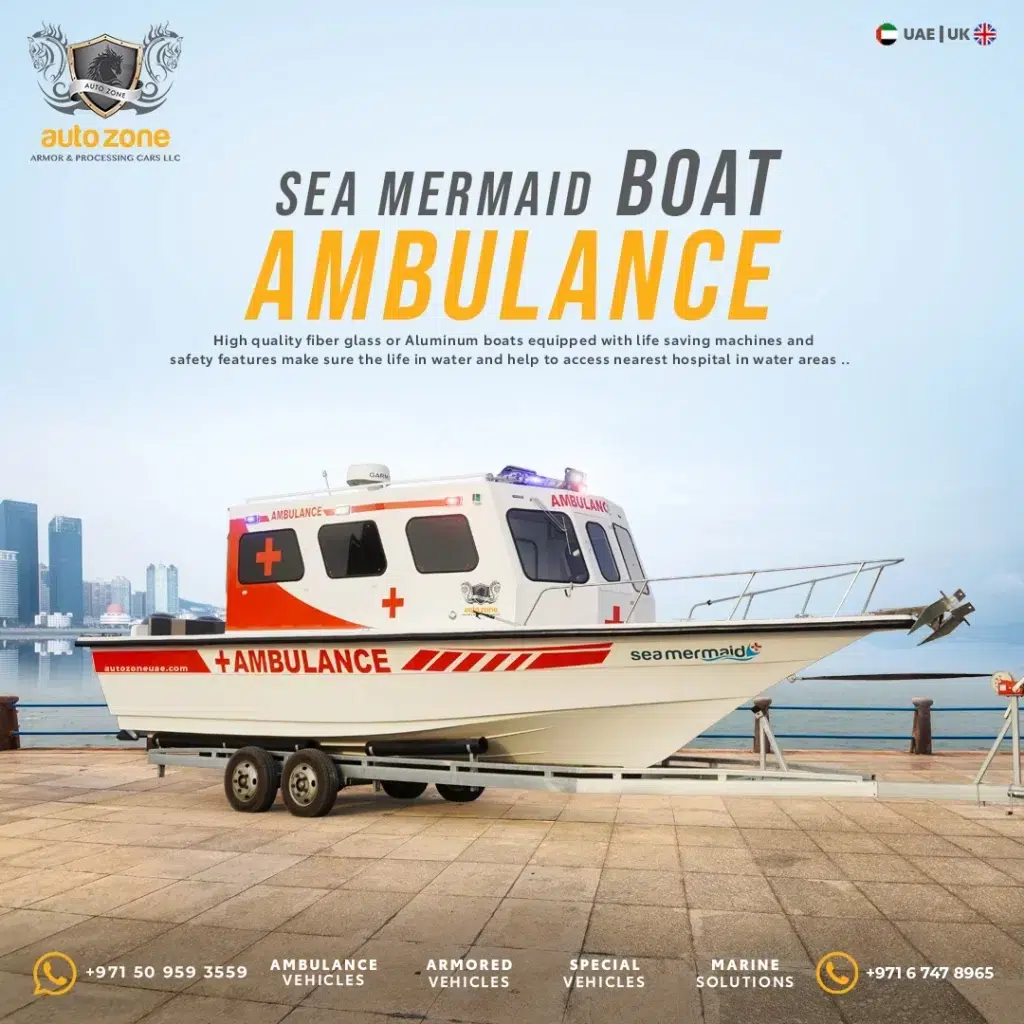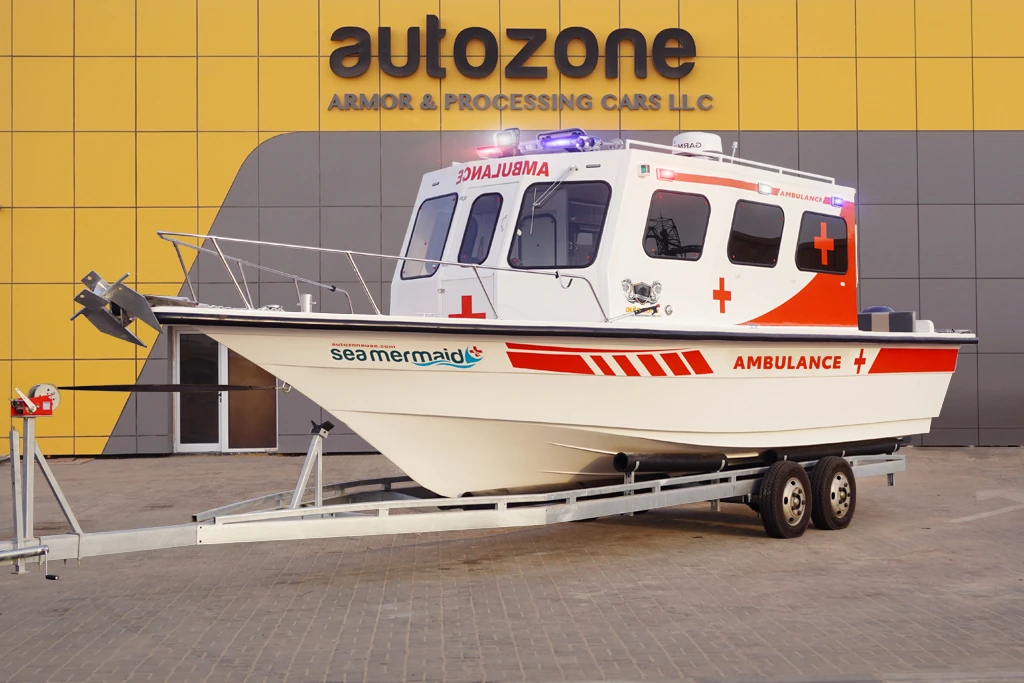In regions where waterways form the backbone of local transport, the challenge of emergency medical response takes on a unique dimension. Traditional ambulances, confined to roads, falter at the water’s edge, leaving vast areas potentially underserved in critical times of need. This is where the concept of boat ambulances sails into the picture, bridging the gap between urgent healthcare needs and hard-to-reach communities.
Born out of necessity, boat ambulances are more than just a novel idea. They are a vital lifeline in areas the conventional wheels of healthcare cannot reach. The suppliers of these specialized vessels have thus emerged as unsung heroes in emergency response. They are not merely providing a mode of transport. They are effectively redefining the contours of life-saving services in aquatic environments.
This blog post explores the transformative role of boat ambulance supplier, shedding light on how they navigate the complex currents of innovation, efficiency, and care. Join us as we delve into the world where water meets wellness and discover how these unique services are making waves in emergency medical response.
The Emergence of Boat Ambulance Supplier
The concept of boat ambulances isn’t entirely new, yet its evolution has been remarkable. The genesis of this idea can be traced back to communities living in delta regions, island groups, and along extensive river systems. Here, the conventional ambulance services were often hindered by geographical constraints, leading to the advent of boat-based emergency medical services (EMS).
A Historical Perspective
- Early Beginnings:
These services started as simple boats equipped with basic medical supplies. They were operated by local communities or health organizations, primarily aiming to fill the gaps in emergency healthcare access. - Development Over Time:
As the demand and recognition of such services grew, so did their complexity and sophistication. Today’s boat ambulances are equipped with advanced life-saving equipment akin to their land counterparts and are operated by skilled medical professionals.
Boat Ambulances in Today’s World
- Adaptation to Local Needs:
Each region has unique requirements, leading to customizing boat ambulances. Some are designed to navigate narrow channels faster, while others are more comprehensively equipped for extended patient care during transit.
The rise of boat ambulance supplier reflects a shift in understanding the diverse needs of different communities when it comes to emergency medical care. It’s a story of adaptation, innovation, and commitment to ensuring healthcare reaches every corner, no matter how remote.
Role of Boat Ambulance Suppliers
The transformation of boat ambulance supplier from rudimentary vessels to sophisticated, high-tech medical facilities owe much to the ingenuity and dedication of specialized suppliers. These suppliers don’t just build boats. They engineer floating emergency rooms tailored to meet the specific challenges of water-based medical response.
Types of Boat Ambulances
- Customization for Different Needs:
Suppliers often design boat ambulances based on the unique needs of different regions. This includes variations in size, speed, and medical capabilities. Some are fast, agile boats for quick response, while others are larger, equipped for more extended patient care, and equipped with facilities like onboard operation theatres. - Technological Integration:
Modern boat ambulance have state-of-the-art medical equipment, such as defibrillators, ventilators, and advanced communication systems. This ensures that patients receive the best possible care from embarkation.
Innovation in Design and Technology
- Navigating Challenges:
Boat ambulance suppliers innovate to overcome challenges such as navigation in shallow waters, stability during medical procedures, and durability in various weather conditions. - Sustainability and Efficiency:
Recent trends show suppliers focusing on environmentally friendly designs, such as solar-powered ambulances, and optimizing fuel efficiency without compromising speed or medical capabilities.
The role of these suppliers is pivotal in providing a means of transport and ensuring that the boat ambulances are reliable, efficient, and fully equipped to handle medical emergencies. Their commitment to innovation and customization has significantly broadened the scope and effectiveness of emergency medical services in waterway-rich regions.

Impact on Emergency Response
The introduction of boat ambulances has revolutionized emergency medical services in areas crisscrossed by waterways. The impact of these services, facilitated by innovative suppliers, is evident in both statistical data and heartwarming success stories.
Case Studies and Real-Life Successes
- Life-Saving Missions:
Share specific instances where boat ambulances have been crucial. For example, in the Amazon rainforest, where access to remote communities is primarily through rivers, boat ambulances have dramatically reduced response times and saved countless lives. - Community Impact:
Highlight how these services have improved overall healthcare access and emergency response in isolated communities, leading to better health outcomes and increased public trust in medical services.
Effectiveness and Statistics
- Response Time Reduction:
Illustrate with data how boat ambulances have reduced emergency response times compared to traditional road ambulances in certain areas. - Improved Survival Rates:
Provide statistics, if available, showing the improvement in survival rates or emergency outcomes since the introduction of boat ambulances.
Beyond Immediate Medical Care
- Educational Role:
Boat ambulances often play a dual role by providing medical education and awareness to remote communities, further enhancing the overall health landscape. - Building Resilience:
Discuss how these services have helped communities become more resilient in facing medical emergencies, especially in disaster-prone areas.
The profound impact of boat ambulance suppliers extends far beyond the vessels they provide. By bridging the gap between remote areas and critical healthcare services. They are not just saving lives but are also empowering communities and reshaping the landscape of emergency medical response.
Future Prospects
The future of boat ambulance services holds promise and potential for further advancements. Boat ambulance suppliers continue to innovate and adapt, anticipating the changing needs of communities and responding to emerging challenges.
Advancements in Technology and Design
- Digital Integration:
Suppliers are exploring integrating advanced digital technologies, including telemedicine capabilities, to connect onboard medical professionals with remote specialists for real-time consultation. - Smart Navigation:
The development of AI-driven navigation systems can enhance the safety and efficiency of boat ambulances, especially in complex waterway networks.
Sustainability and Environmental Responsibility
- Renewable Energy:
The shift toward renewable energy sources, such as solar and wind power, can make boat ambulances more sustainable and reduce their carbon footprint. - Green Materials:
Suppliers are researching and adopting environmentally friendly materials and coatings to minimize the impact on aquatic ecosystems.
Global Expansion and Collaboration
- International Outreach:
Suppliers are exploring opportunities to expand their services beyond their current regions, sharing expertise and collaborating with organizations worldwide. - Knowledge Sharing:
Collaborative efforts between boat ambulance suppliers, healthcare organizations, and governmental agencies can lead to the development of best practices and standards for water-based emergency medical services.
Disaster Preparedness and Resilience
- Preemptive Measures:
Boat ambulance suppliers are actively involved in disaster preparedness, providing communities with preemptive strategies and resources for coping with natural disasters. - Capacity Building:
Training and capacity-building programs for local healthcare workers and boat ambulance operators are being developed to enhance emergency response during crises.
As boat ambulance services evolve and become more technologically advanced, sustainable, and globally interconnected. They hold the potential to save more lives and improve the overall resilience of communities in water-rich regions.
Conclusion
In the emergency response realm, a unique thread traverses waterways, connecting isolated communities to the vital lifeline of healthcare. Boat ambulance suppliers, often working behind the scenes, are the artisans of this thread, weaving together innovation, adaptability, and unwavering commitment to serve.
As we conclude our exploration of how boat ambulance suppliers are reshaping emergency response, we invite you to reflect on the profound impact of their work. These suppliers are not mere providers of vessels. They are architects of resilience, bridging geographical gaps and ensuring access to critical medical care.
The journey continues into a future where boat ambulance services evolve, embracing sustainability, technology, and global collaboration. Their dedication remains unwavering, creating a safer, healthier world for all.
In this quiet revolution on the water, boat ambulance suppliers stand as unsung heroes, symbolizing the indomitable spirit of service and the boundless possibilities of innovation.
We invite you to join us on this voyage, where the waves of compassion and progress converge, shaping a brighter future for communities worldwide.

 AR
AR FR
FR






